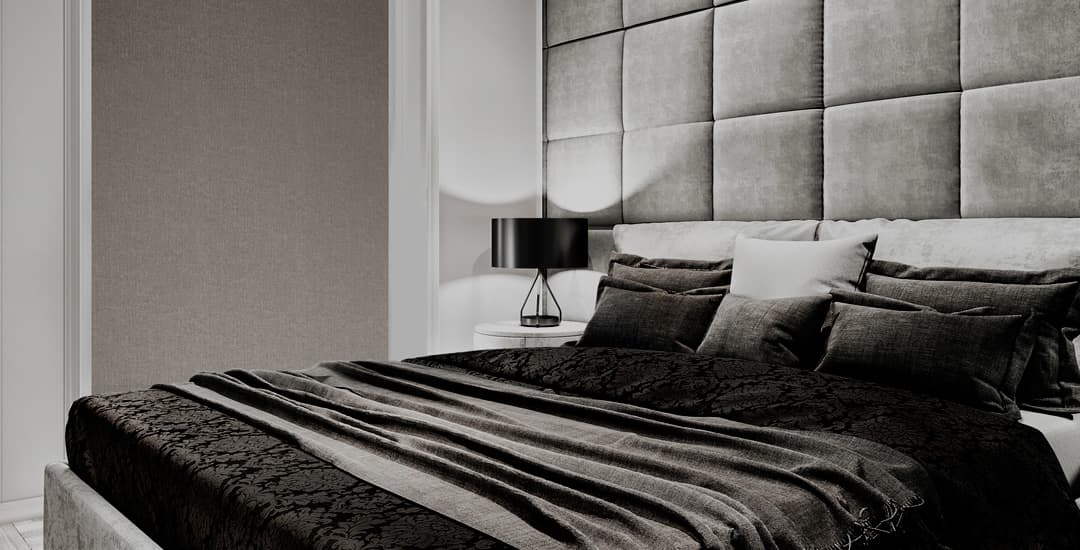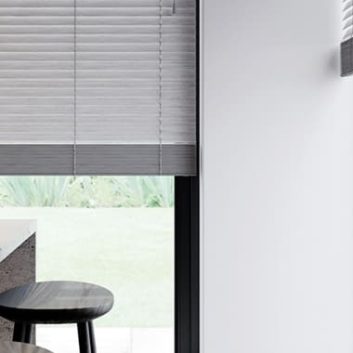
How do I get a total blackout in my bedroom? By using blackout blinds. This might seem like a no-brainer, but buying a blind made from a blackout fabric is only part of the story.
If you want to discover the plot twist, avoid the red herring, and get to the fairy-tale ending (“and they all slept happily ever after”) then read on, as I’m going to cover all of the key points on how to get a total blackout in the bedroom with blinds while also keeping it as short as I can.
Preventing any light at all from entering a bedroom via a window, even with a blackout blind, isn’t actually as simple as it might seem; but it is entirely possible if you know how. Do you completely black out a bedroom with just one set of blinds, or do you need two, for instance?
Find out the answer, plus secret option number three (perfect fit blackout blinds…) below.
How do you completely black out a bedroom?
Right then, to kick us off – how do you completely black out a bedroom?
This actually comes down to a combination of factors, and the material of the blind used to cover the window is just one of them.
Obviously choosing a blind in blackout fabric is the right start – and if you’re talking “complete” blackout and really mean it, you might find that some blackout blinds fulfil the letter and the spirit of this more effectively than others.
For instance, blinds that have slats or louvres (the latter being on vertical blinds) need to be closed fully flush to avoid light filtering through them. But in the case of vertical blinds, a breeze, door opening, or even draft from the closed window itself if it’s a bit rattly might mobilise the louvres enough to make them sway and allow light in, despite their weighted bottoms.
This means you might want to pick blackout blinds that are made of one solid, uninterrupted sheet of fabric, like blackout roller blinds or blackout Roman blinds. This is of course just a matter of personal choice, and plenty of people with vertical blinds and blinds with slats find that they perform just as they want them to, so keep your options open; I just wanted to mention the theoretical worst-case scenario for the sake of being thorough!
As well as choosing a blind made of blackout material, how and where you hang it is integral to ensuring that you get a total blackout in your bedroom.
By this I mean things that are probably self-evident, like measuring up correctly to ensure that the blind you buy fits; but it also means factoring in the impact of whether you hang your blind inside of, or over, the window recess.
Furthermore! In some cases, the only way to get a total blackout in your bedroom may, for some rooms/windows/blinds, be with two pairs of blinds; or alternatively, blinds that fit onto, rather than over/above, the window.
Moving on to cover those points in a bit more detail…
How do I get a total blackout in my bedroom with one set of blinds?
Many if not most people can get a total blackout in their bedroom using just one set of blinds, as long as they do their homework about how and where they hang it.
So, how do I get a total blackout in my bedroom with one set of blinds? Essentially, by choosing one with a narrow headrail (so that the closed blind lies close to the wall and minimises gaps at the sides) and hanging it over the window recess.
Taking this approach and achieving a total blackout at the end of it relies on your blind covering enough of the wall on all four sides around it to prevent light leakage. We advise a margin of at least 10cm over the surrounding wall.
As I say, for most people, this will work; but for some windows/blinds/challenges and other variables, the only sure-fire approach to create a blackout so dark you could develop a camera film in there (remember them? No, younger millennials, you do not) is to use two sets of blinds instead of one.
Using just one set of blinds and hanging it inside of the window recess is far more likely to result in light leakage to some extent; a perfectly acceptable amount for many, but possibly not the total blackout you came here seeking.
How do I get a total blackout in my bedroom with two sets of blinds?
If you’re prepared to invest in two pairs of blinds for the window in question, you can get a total blackout in your bedroom.
Again, this relies on you measuring and fitting the blinds properly, and buying blinds made of a blackout fabric. To get a total blackout in the bedroom using two blinds, you hang one of the blinds inside of the window recess as close to the glass as you can get it, and the other outside of or over the window recess, with the same 10cm or greater margins that I mentioned above.
This covers all of your bases, and will ensure a total blackout.
How do I get a total blackout in my bedroom with perfect fit blinds?
There is another option to achieve a total blackout in your bedroom that is hard to place into either the category of being one set of blinds or two; this is by using perfect fit blinds.
Perfect fit blinds are relatively new to the UK and look totally different to any other type of blinds you may be familiar with!
They fit into the profile of the window itself and sit against the glass, attaching along the side of the glass where it meets the beading. This means that each pane or panel of glass in any given window requires its own blind, and so some windows may need two or more; but if your window is just one uninterrupted piece of glass, you’d only need one.
Perfect fit pleated blinds can be made in square or rectangular shapes only, so won’t suit windows that are round or arched at the top; nor those with leading, or older windows that are fitted with putty or wooden beading rather than rubber beading.
You can buy perfect fit blinds in blackout fabrics (bear in mind that not all perfect fit blinds are blackout blinds), and if you do, the fact that they fit directly onto the window with no gaps nor possibility of any light leakage around them also allows you to achieve a fool-proof total blackout in your bedroom.




